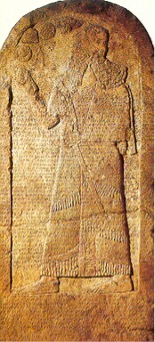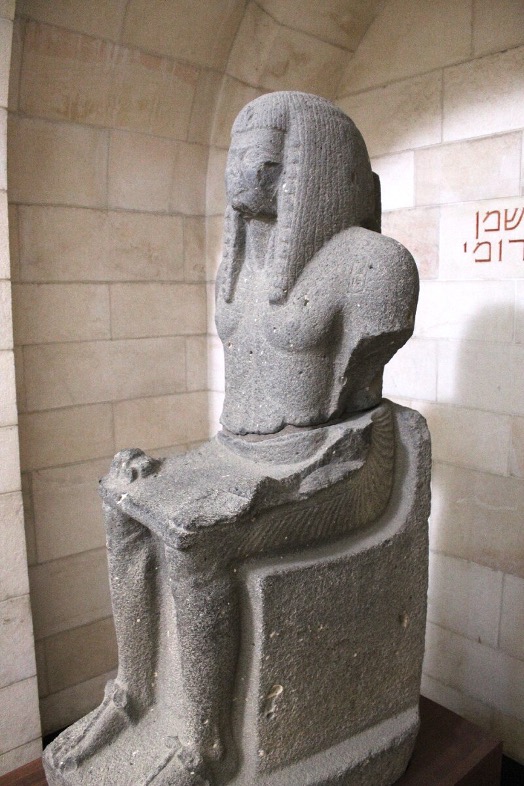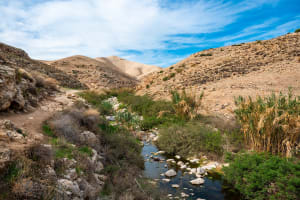Was King Solomon real? Archaeological clues to Israel’s golden age
Part three of series exploring archaeological findings related to the First Temple in Jerusalem

As we consider the First Temple built by King Solomon, key questions arise: What do we truly know beyond the biblical account? What evidence supports the very existence of such a temple?
This three-part series explores the evidence surrounding Solomon’s Temple.
In Part One, we examined ancient wooden beams and related discoveries that may provide physical traces of the First Temple. In Part Two, we turned to a small golden pendant – a jewel that may point to Phoenician presence in Jerusalem during the days of David and Solomon.
In this article, Part Three, we address the question of Solomon’s historicity itself, engaging biblical descriptions alongside modern skepticism, examining the silence of extra-biblical records, and affirming the Bible’s reliability as a historical source.
Solomon’s Wealth (1 Kings 10:4–7)
"When the queen of Sheba saw all the wisdom of Solomon and the palace he had built, the food on his table, the seating of his officials, the attending servants in their robes, his cupbearers, and the burnt offerings he made at the temple of the Lord, she was overwhelmed. She said to the king, 'The report I heard in my own country about your achievements and your wisdom is true. But I did not believe these things until I came and saw with my own eyes. Indeed, not even half was told me; in wisdom and wealth you have far exceeded the report I heard’" (1 Kings 10:4–7).
The story of the Queen of Sheba’s visit is one of the most striking accounts in scripture. It reveals the extraordinary wisdom and wealth of King Solomon, a ruler whose reputation reached far beyond Israel’s borders. Chapter 10 of 1 Kings paints a vivid picture of Solomon’s unmatched prosperity and insight – yet, modern scholarship has often questioned whether this description reflects historical reality.
The Rise of Biblical Criticism
In the mid-20th century, a wave of biblical criticism began challenging the reliability of accounts like Solomon’s. Critics asked whether these passages described real history or embellished, legendary traditions.
Two major discoveries transformed the study of the ancient Near East:
1822: Jean-François Champollion deciphered Egyptian hieroglyphs.
1850s: Scholars deciphered Sumerian cuneiform.
These breakthroughs opened vast archives of ancient records from Egypt and Mesopotamia. For the first time, historians could read firsthand accounts from Israel’s powerful neighbors, no longer relying almost entirely on the Bible and a few Greek historians.
As scholars studied these records, some concluded that the Bible was little more than myth. They argued that Israel borrowed stories from surrounding cultures and exaggerated its own past, casting doubt on the historicity of kings like Solomon.
Archaeological Confirmations of the Bible
Over time, however, archaeology began confirming biblical accounts. Numerous kings mentioned in scripture also appear in foreign records, including:
King Ahab of Israel in Assyrian inscriptions.
King Hezekiah of Judah, who resisted Assyrian invasion.
The conquests of Judah and Israel by Egypt, Assyria, and Babylon – events recorded in both biblical and foreign sources.
These discoveries softened the harsh skepticism of earlier scholars, showing that the Bible is far more historically reliable than critics once assumed.
The Problem of Solomon
Despite these confirmations, Solomon remains a controversial figure. Critics question whether his legendary wealth and power reflect historical truth – or whether they are later embellishments. Some even doubt his existence.
Why Scholars Doubt Solomon’s Historicity
No External References
Despite his supposed influence, Solomon is absent from contemporary Egyptian, Assyrian, and Babylonian records. Critics argue that if a king had such power, neighboring empires certainly would have mentioned him.Borrowed Descriptions
Some passages describing Solomon’s throne and riches (1 Kings 10:18–21) resemble accounts of Assyrian emperors who reigned later, leading critics to suggest the biblical writer borrowed imagery.
Is there a research-based way to address such criticism while maintaining faith in the biblical text?
Kings as a Unified Work
1 & 2 Kings form a carefully structured narrative, stretching from David’s final years to the Babylonian exile. Numerous kings in this book are not historically confirmed.
For instance:
Jeroboam II of Israel reigned longer than any other Israelite king, but no foreign texts mention him.
Josiah of Judah is missing from external inscriptions, though his sons appear.
Others also remain absent from external records. Yet absence does not equal nonexistence.
The reality is that most writings of the ancient Near East were lost. What survives are only fragments carved in stone or preserved on clay tablets.
The Silence Around Solomon
Yet, critics argue, if Solomon was so wealthy and powerful, trading with foreign kings, why is there no record of him in Egypt, Assyria, or other ancient Near East texts?
The answer lies in asking: What texts from David and Solomon’s era do we actually have?
Surprisingly, none are describing Israel. During their reigns, the major empires – Assyria, the Hittites, Babylon, and Egypt – did not conduct campaigns into the southern Levant. Their records from that time deal only with internal affairs or nearby neighbors.
Mesopotamia
From 853 B.C. onward, Assyrian kings began advancing into the southern Levant. By Shalmaneser III’s reign, Israel is first mentioned. King Ahab is described on the Kurkh Monolith for participating in the Battle of Qarqar.
This battle took place a century after Solomon’s Temple was built. By then, the kingdom had already split and Temple treasures had been looted.
Before Shalmaneser III, Assyrian kings rarely crossed the Euphrates, and they provide no records of Israel, Phoenicia, or Transjordan. The reigns of Saul, David, and Solomon coincided with a time when Assyria had almost no military campaigns.

Egypt
Egypt was the dominant empire in Israel’s region during the second millennium B.C. The last Egyptian campaign northwards was under Ramses III during the 12th century B.C., and was well-documented in Egyptian inscriptions and archaeological finds in Israel.
After that, Egypt ceased northern conquests. The only exception is Pharaoh Shishak (Sheshonq I), mentioned in 1 Kings 14:25 during the reign of Solomon’s son Rehoboam. According to the Bible, Shishak plundered the temple’s treasures, however, his inscriptions of conquests list only cities, omitting any mention of the kings or peoples he fought.

The Southern Levant
Similarly, in smaller Levantine kingdoms, no inscriptions survive from the 10th century B.C. – the time of David and Solomon. Not from Aram, Tyre and Sidon, the Hittites, Canaan, or Transjordan.
The era of David and Solomon is marked by silence throughout the entire region.
Conclusion: Trusting the Biblical Account
David and Solomon's rule occurred during a time when Israel's neighbors didn't record events there, a historically silent period. While critics point to the lack of external evidence, archaeology has repeatedly shown that silence does not equal falsehood.
The Bible remains the most consistent and complete record of Israel’s golden age. Until archaeology uncovers new evidence, we have every reason to trust scripture’s account!
To read the previous articles in this series, click Part One and Part Two.

Ran Silberman is a certified tour guide in Israel, with a background of many years in the Israeli Hi-Tech industry. He loves to guide visitors who believe in the God of Israel and want to follow His footsteps in the Land of the Bible. Ran also loves to teach about Israeli nature that is spoken of in the Bible.
You might also like to read this:

















